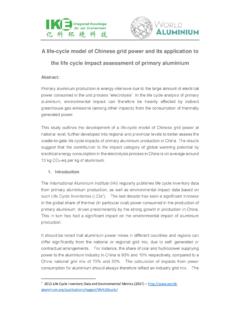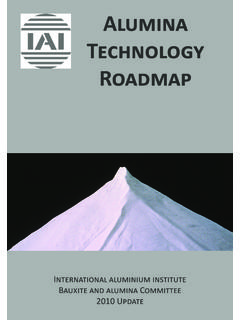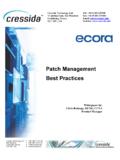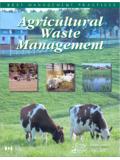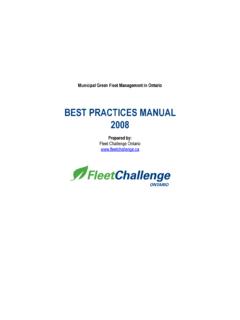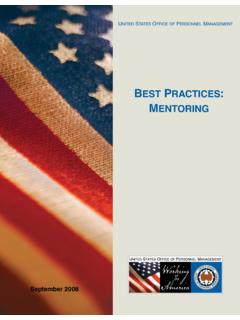Transcription of Bauxite Residue Management - World Aluminium
1 Bauxite Residue Management : Best PracticeJuly 20152 International Aluminium Institute (IAI)Current IAI membership represents over 60% of global Bauxite , alumina and Aluminium production. Since its foundation in 1972 (as the International Primary Aluminium Institute), the members of the IAI have been companies engaged in the production of Bauxite , alumina, Aluminium , the recycling of Aluminium , or fabrication of Aluminium or as joint venture partners in such. While the Institute works closely with the national and regional Aluminium associations, with which it shares many members, the associations themselves are not members of the IAI. The key objectives of the Institute are to: Increase the market for Aluminium by enhancing World -wide awareness of its unique and valuable qualities. Provide the global forum for Aluminium producers on matters of common concern and liaising with regional and national Aluminium associations to achieve efficient and cost effective co-operation.
2 Identify issues of relevance to the production, use and recycling of Aluminium and promoting appropriate research and other action concerning them. Encourage and assisting continuous progress in the healthy, safe and environmentally sound production of Aluminium . Collect statistical and other relevant information and communicating it to the industry and its principle stakeholders. Communicate the views and positions of the Aluminium industry to international agencies and other relevant the IAI, the Aluminium industry aims to promote a wider understanding of its activities and demonstrate both its responsibility in producing the metal and the potential benefits to be realised through their use in sustainable applications and through recycling. **European Aluminium (EA)The EA, founded in 1981, represents the whole value chain of the Aluminium industry in Europe. European Aluminium actively engages with decision-makers and the wider stakeholder community to promote the outstanding properties of Aluminium , secure growth and optimise the contribution our metal can make to meeting Europe s sustainability challenges.
3 Through environmental and technical expertise, economic and statistical analysis, scientific research, education and sharing of best practices, public affairs and communication activities, EA promotes the use of Aluminium as a permanent material that is part of the solution to achieving sustainable goals. **Disclaimer: The information contained in this publication is presented to the best of the Institute s knowledge, but without warranty. The application of the methods, systems and processes for the Management of Bauxite Residue outlined in this publication is beyond the Institute s control and responsibility and should be taken in compliance with local and national regulatory Introduction 4II. Properties of Bauxite Residue 5 - 7a. Background 5b. Production of Bauxite Residue 5 - 6c. Composition 6 - 7d.
4 Characteristics 7 III. Long Term Planning and Design 8 -10a. Storage facility design criteria 9b. Construction 9c. Seepage control 9d. Bauxite Residue transportation 9I V. Governance 11 - 12a. Emergency action plan 11V. Performance Tracking 13 - 14VI. Bauxite Residue Disposal and Storage 15 - 18a. Processing prior to disposal and storage 15b. Transportation 15c. Disposal and storage methods 15 - 17d. Neutralisation 17 VII. Utilisation of Bauxite Residue 19 - 24a. Potential applications 19 - 23b. Commercial applications with significant potential 24 VIII.
5 Remediation and Rehabilitation 25 - 28a. Case study: From red to green in ten years 26 - 27IX. Recent Studies on Bauxite residues 29a. Leaching assessment methodologies 29X. References 30XI. Bibliography 30 XII. Bauxite Residue Voluntary Objectives 314I. IntroductionBauxite Residue has been produced since the development of the alumina/ Aluminium industry in the late nineteenth century. It is one of the largest industrial by-products in modern society with global levels estimated at around 3,000 million tonnes at the end of 2010 (Power et al, 2009).
6 Developing and implementing effective storage and remediation programmes remains essential as the inventory grows by approximately 120 million tonnes per annum. The chemical and physical properties of Bauxite residues are determined by the nature of the Bauxite and the effect of the Bayer process. The technology and operating procedures at individual refineries will impact the water content and pH value of the material being discharged - two key factors in Bauxite Residue Management . This document elaborates on the Aluminium industry s objective to ensure Bauxite Residue Management is based on global best practice, providing safe storage and achieving acceptable low social and environmental impacts during operation and post-closure. Best practice is the best way of doing things for a given site at a given time. Best practice principles and approaches should evolve to accommodate innovative solutions as they are developed.
7 Best practice is not a single one-size fits all prescription to Bauxite Residue Management : it involves managing each risk with best available technology appropriate to the circumstances. This will be influenced by local climatic, geographic and environmental conditions as well as government policies, the regulatory framework and, importantly, community factors. Development of technological applications for Bauxite Residue treatment could change the material discharged, allowing for different long term storage, remediation, and re-use options (for example, filtration developments). Significant research in remediation solutions for existing Residue material is being undertaken. High alkalinity in much of the stockpiled material is a critical aspect to be resolved. The best practice recommendations are the result of a series of workshops held in conjunction with the Alumina Quality Workshop (AQW) in Perth 2012 and the China Non-Ferrous Metals Industry Association (CNIA) in Nanning 2012.
8 Operational and technical experts from the global alumina industry identified the design and operational criteria that recognise and promote best practices for the sustainable Management of Bauxite Residue storage facilities. We would like to thank Ken Evans, Chris Handley, Leon Munro and David Smirk for their work in helping to put these recommendations together. We would also like to thank Bruce Brown, Gary Bentel, Don Glenister, David Honey, Leon Munro, David Smirk and Steve Vlahos for facilitating the workshops. The IAI acknowledges the contributions by Ken Evans (ETCL) and Eirik Nordheim (European Aluminium ) and the members of the IAI Bauxite & Alumina Committee and EA Alumina group in writing the other sections of this document 5II. Properties of Bauxite Residue a. Background Aluminium is a material with global annual production of some 45 million tonnes in 2011 and an estimate of nearly 50 millions tonnes in 2013.
9 Aluminium metal does not occur naturally although elemental Aluminium ranks after oxygen and silicon in abundance in the earth s crust. Aluminium is a constituent of many rocks, minerals and ores and has to be extracted and converted to metal through a combination of chemical and electrolytic processes. The normal precursor to Aluminium metal is Aluminium oxide (alumina) although routes based on Aluminium chlorides have also been developed and employed on a very small scale. Over 95% of the alumina manufactured globally is derived from Bauxite by the Bayer process. There is some limited manufacture of alumina using other processes, for example the VAMI and sinter route processes in Russia and China. Bauxite and nepheline syenite are the principal raw material sources but experimental work is continuing using kaolin and high alumina containing clays. Residual materials arise during these alumina manufacturing processes: those using the Bayer process extraction of Bauxite are termed red mud whilst those from different routes using other aluminous materials give rise to bellite/white muds.
10 Bauxite ore is readily available and contains Aluminium oxides and hydroxides in levels between 30 and 65% (measured as Aluminium oxide). Current estimates of known World reserves are some 30 billion tonnes with indications of unproven reserves being much higher. It is mined in many countries including Australia, Brazil, China, Ghana, Greece, Guinea, Guyana, Hungary, India, Indonesia, Jamaica, Sierra Leone, Suriname, Venezuela and Vietnam. In the Bayer process, Bauxite is heated under high temperature and pressure conditions in caustic soda to form a solution of sodium aluminate leaving behind an insoluble Residue . The sodium aluminate is then filtered and Aluminium hydroxide crystals are encouraged to precipitate. The Aluminium hydroxide is sometimes sold as is or can be calcined to form Aluminium oxide (alumina). Over 90% of the alumina produced in the World is used to manufacture Aluminium metal, this is termed metallurgical or smelter grade alumina (SGA); the remainder is termed non-metallurgical grade alumina (NMGA).
